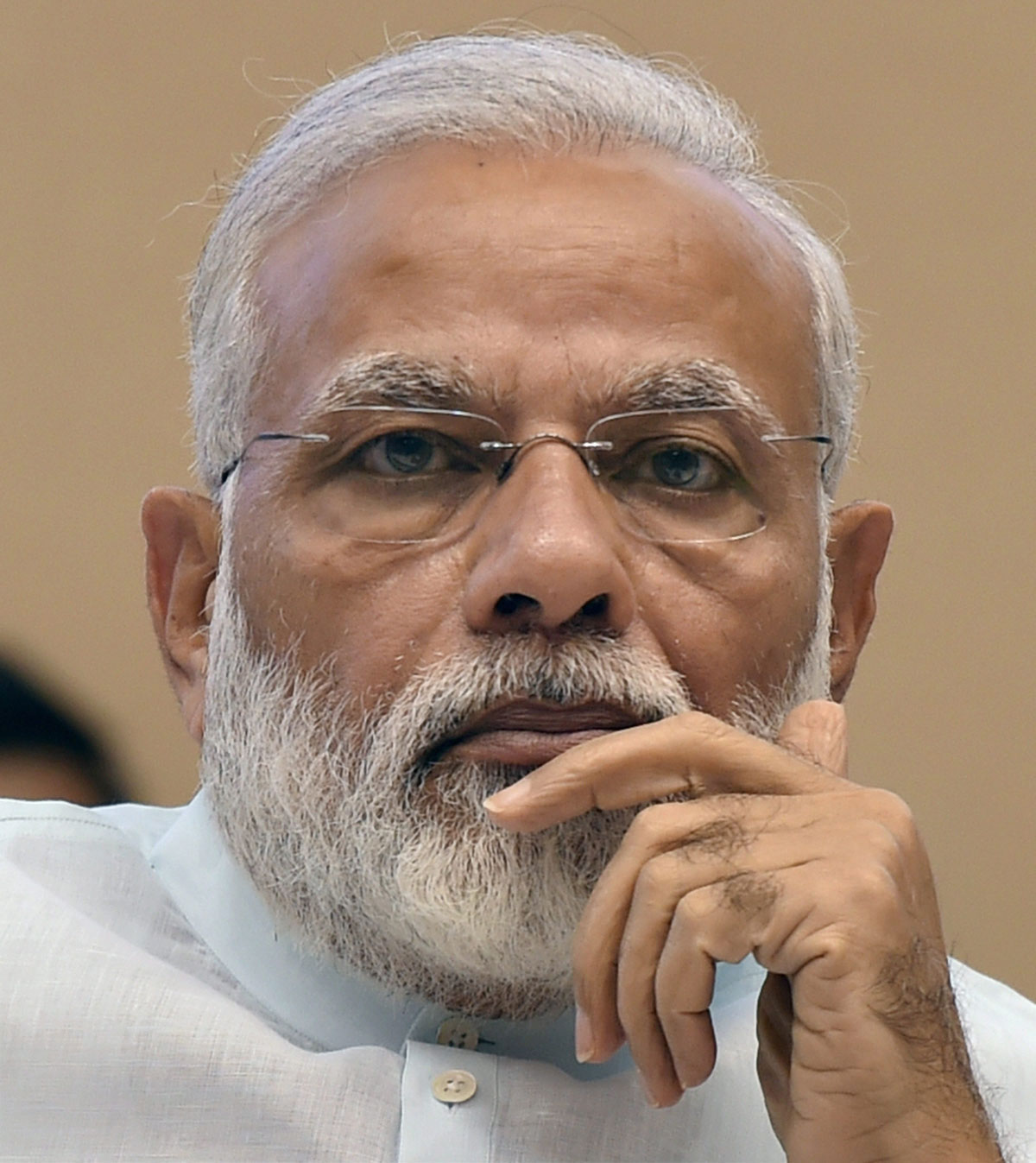Modi’s Second-most Important Economic Reform After GST
Prime Minister Narendra Modi during Civil Services Day 2017 function in New Delhi, June 21. (Manvender Vashist/PTI)
After demonetization backfired, many rightly believe that Prime Minister Narendra Modi’s biggest economic reform has been GST. There has, however, been a silent restructuring of another sector that is crucial for India’s progress towards becoming a self-reliant economy. India’s oil minister Dharmendra Pradhan recently launched the country’s maiden National Data Repository, which stocks details about hydrocarbons prospects of 3.14 million square km. of sedimentary basins, writes Siddharth Srivastava.
This marks the long-pending switch over to the transparent and flexible Open Acreage Licensing Policy (OALP) wherein entities are free to choose areas they want to explore. Under OALP, companies can access the National Data Repository (NDR) and study the vast seismic data of currently producing fields, explored and unexplored areas. Locations not under any licensee can be carved out for Exploration and Production (E&P) efforts. “Once an area is selected, the government will put it up for bidding and any firm offering the maximum share of oil or gas produced from the area would be awarded the block,” Pradhan said.
Areas mapped by NDR are now on offer from July 1. “We expect OALP to accelerate exploration activities in the country since investors can express their interest in an area which they feel has prospective without waiting for formal bidding,” Pradhan said.
There are about 90 countries that offer NDRs but the volume of data in Indian NDR puts the country in the top ten, said Atanu Chakraborty, head of upstream regulator, the Directorate General of Hydrocarbons (DGH), said. Over 930,000 line kilometers of 2D seismic, 280,000 square km. of 3D seismic and 1,717 well data has already been populated by the DGH that operates the NDR.
Yet, over 52 percent of India’s sedimentary basins are still un-appraised. Until now, the government has been selecting, demarcating and offering acreages for bidding under multiple exploration licensing rounds called the New Exploration Licensing Policy or NELP. The last bid round under NELP took place in 2010.
OALP, however, needs to be read alongside the new hydrocarbon policy (HELP) that replaced NELP in March 2016. The liberal paradigm under HELP permits considerable pricing and marketing freedom to developers; contracts will shift to revenue sharing from the controversial production sharing that has caused several disputes; uniform licensing will apply to overlapping conventional and unconventional sources such as shale oil and gas. The government has also conceded the longstanding explorers demand that they be allowed to charge premium price for gas produced from difficult and deepwater acreages.
Pradhan said the NELP rounds, under which over 250 blocks have been offered since 2000, has failed. “The total production of oil and gas from NELP blocks is equivalent to only three days of India’s oil consumption. With the experience of several litigations and not very encouraging production output from NELP rounds, we decided not to go for incremental policy change but a completely new policy (HELP and OALP),” he said.
“Going forward, the government remains committed to making sustained and significant efforts to liberalize the sector by simplifying processes, increasing market access and bringing developments in the technology domain with the aim to enhance the efficiency of our oil and gas industry,” the minister added. Vedanta, the promoter of vertical Cairn Oil & Gas that operates India’s biggest onshore oilfield at Barmer in Rajasthan, has welcomed the change. “This policy reiterates GOI’s commitment to reduce administrative and regulatory burden, thus enhancing ease of doing business,” the company said.
Long Road Ahead
Read together, NDR, HELP and OALP are significant positive efforts by the government to cut administrative and regulatory roadblocks in order to infuse new technologies and investments, both domestic and global, into India’s hydrocarbon sector.
These changes need to be seen in the context of other major reforms, including the revamped indirect tax GST that also came into force from July 1, that New Delhi has been able to implement. The Modi government has pushed forward with the amendments that require legislative approval due to the clear majority it enjoys in Parliament.
Truth is that the efficacy of these changes, including GST, OALP, NDR and most elements of HELP, have been spoken about for several years now. Failure to institute the systemic overhauls is a major reason that India’s E&P efforts have lagged and foreign investors have largely kept away.
Ironically, previous coalition governments were unable to win the consent of Parliament due to opposition from the BJP, the current ruling party. But, it is better late than never.
Enabling policy frameworks are, however, necessary but not sufficient conditions for large capital to flow. India continues to considerably lag in infrastructure development, including roads, efficient rail networks and power supply. Outdated state-level laws linked to land acquisition, downsizing and hiring of labor continue to be bottlenecks.
And, last but not least is the fragile law and order situation due to Maoist insurgency which is a big problem in India’s eastern belt that is rich in oil, gas and coal.
Progress in India is a multi-layered and complex matter that needs tackling at multiple levels. It will not be easy for the Modi government to undo years of policy paralysis, bureaucratic red tape, corruption and vested political interests, in a hurry.


